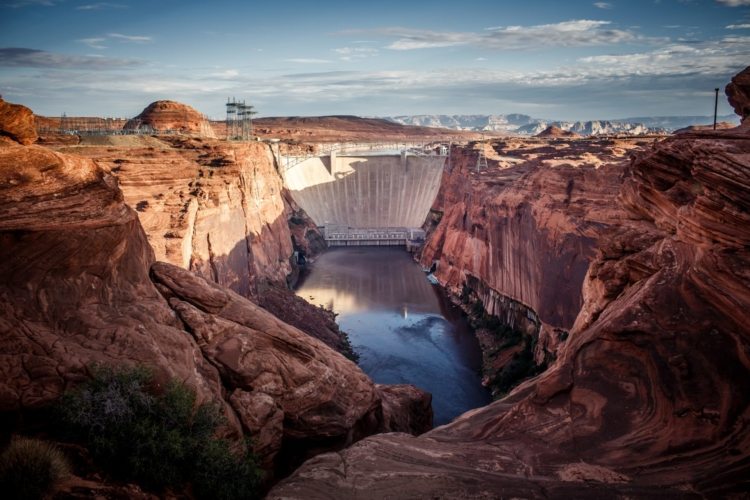Starving and panting, a band of coyotes ventures through the blazing heat to the only natural source that will help them relieve their hunger and thirst, the river. The band of coyotes uses the river to feed, hydrate, and cool down. It is a haven for coyotes and much other wildlife. Over the years, the river grows noticeably smaller as the heat continues to rise due to the climate crisis. The once haven for wildlife has now become a fight for survival.
Stretching across seven states, the creator of national landmarks and a refuge for wildlife, the Colorado River Basin provides drinking water for 40 million people according to the Colorado Water Conservation Board. The basin is essential to life and the lifeline to the western states. A study from NASA and the University of California Irvine demonstrates that the Colorado River lost approximately 53 million acre-feet of freshwater between 2004 to 2014 with the number only rising. Conserving water in states like Arizona is crucial for the protection of natural resources, however, it takes more than one person to save water resources.
READ ALSO: Analysis: Arizona boasts strong record on water management
READ ALSO: Some fast facts to know about the Arizona water supply
“’ Tó éí ííná át’é,’ a Navajo saying which translates to ‘Water is Life.’ Water is crucial for all life; nothing can exist without it. Conserving water is how Arizonians can do their part in protecting a vital source that is life itself,” said Water Conservation Specialist, Nadene Hubbard.
Hubbard works for the Arizona Department of Water Resources in the conservation program to help integrate plans to conserve more water and offer conservation assistance to the public. Hubbard insists that the public explores the conservation program’s website as it will inform the in-depth about the true benefits of conserving water.
Arizona is one of the seven states that use the Colorado River Basin as a water source for municipal and agricultural use. According to the Bureau of Reclamation, Arizona is entitled to approximately 2.8 million acre-feet of water from the Colorado River.
Arizona Water Conservationist, Haley Paul, advocates for the preservation of the Colorado River. “In the nearer term, there’s an acute need, we need to save collectively 2 to 4 million acre-feet of water in 2023 to prevent the loss of a principal river,” said Paul. The loss of the Colorado River would be the loss of ecosystems, spiritual values, cultural values of many native tribes, and a natural freshwater resource. Paul exclaims that this is unacceptable and there needs to be active within the states.
Most of the water waste in Arizona is contributed by outdoor water usage such as watering the grass excessively. City of Chandler’s Water Conservation Coordinator, Deina Burns, supports this claim stating, “We get people watering their grass two to three times a day thinking that that would be needed when our grass only needs to be watered once every three days.” Burns has been suggesting to the public to skip their winter grass since it wastes eight thousand gallons of water for every thousand square feet of grass.
Water conservation should be the number one concern living in a desert, according to Burns. “As human beings, we just have a natural connection to water. It’s the heartbeat of the economy. It’s the heartbeat of a community. You can’t have a community if you don’t have water,” Burns said.
The Colorado River will continue to deplete and disappear if there is no action toward conserving water among communities, neighborhoods, or states. The river is essential to life. Hubbard recommends navigating the Arizona Department of Water Resources website to learn how to be responsible and sustainable with water.




